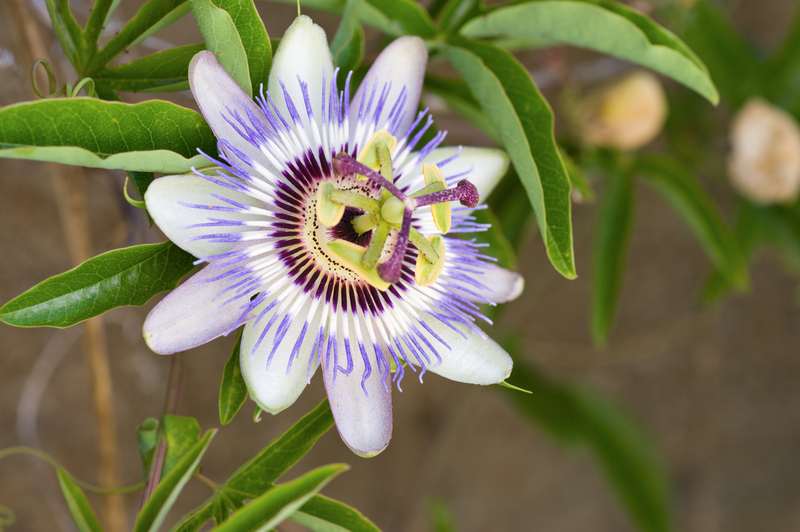Protecting Your Plants from Frost and Ice in Winter
Posted on 11/09/2025
Protecting Your Plants from Frost and Ice in Winter: A Comprehensive Guide
As the temperature drops and the days grow shorter, every gardener knows that the onset of winter brings new challenges. Frost and ice can wreak havoc on unprotected plants, potentially destroying months of hard work in a single cold snap. Whether you're an experienced horticulturist or a gardening newbie, understanding the best strategies for protecting your plants in winter is an essential skill that can make all the difference. In this detailed article, we explore effective, science-backed methods for guarding your plants against frost and ice damage, ensuring your garden emerges from winter healthy and vibrant.
Why Winter Protection is Essential for Your Plants
Frost occurs when temperatures fall below zero degrees Celsius (32?F), causing water within plant cells to freeze and expand. This process ruptures cell walls, leading to wilting, browning, and eventually plant death. Ice, on the other hand, can coat leaves and stems, causing physical breakage and preventing sunlight absorption. Knowing how to prevent these winter hazards is essential if you want to maintain a thriving garden throughout the year.
Which Plants Are Most Vulnerable to Frost and Ice?
- Tender annuals: Such as impatiens, marigolds, and tomatoes.
- Perennials not native to cold zones: Including fuchsias, dahlias, and some types of roses.
- Young saplings and seedlings: Often have less-developed root systems and are more susceptible to sudden temperature drops.
- Container plants: Roots are more exposed and cool off faster than those in the ground.
- Evergreen species: They lose water through their leaves year-round and can suffer from winter burn.

Recognizing the Signs of Frost Damage
Early detection of frost injury can mean the difference between saving and losing a beloved plant. Look for these telltale signs:
- Blackened, wilted, or translucent leaves
- Stems appearing mushy or water-soaked
- Leaf drop or swirling
- Delayed appearance of new growth during spring
If you catch frost damage early, pruning affected areas and providing proper care may help the plant recover.
Preventative Measures Against Frost and Ice
1. Strategic Location and Microclimates
Plant placement is crucial when it comes to frost protection. Take advantage of microclimates in your garden by observing which areas stay warmer due to sun exposure, walls, fences, or proximity to buildings. South-facing walls, for example, absorb heat during the day and radiate it back at night, buffering nearby plants from rapid cooling.
2. Soil Preparation and Mulching
- Mulching acts as an insulating layer for plant roots. Apply a 2-4 inch layer of organic mulch (such as straw, pine needles, or shredded bark) around your plants to help retain soil warmth, suppress frost heaving, and maintain consistent moisture.
- Avoid heavy mulching against the stem to prevent rot.
- Well-drained soil is less likely to freeze deeply. Amend heavy clay soil with compost to improve drainage.
3. Watering Wisely Before Frost
Moist soil retains more heat than dry soil. Water your plants a day before a predicted frost to help insulate roots. However, beware of overwatering, as saturated soils can lead to root rot, especially when cold persists.
4. Covering Your Plants: Tips and Techniques
Physical barriers are among the most effective tools for protecting plants from frost and ice.
- Removable row covers: Use horticultural fleece, old bed sheets, or burlap to shield tender plants. Ensure covers reach the ground to trap ground heat, but remove them by day to avoid overheating.
- Frost cloths and horticultural blankets: Specially designed materials allow air and rainfall to reach the plant, offering superior frost and ice protection for plants overnight.
- Cloche or mini-greenhouses: Place clear plastic domes or even cut-off plastic bottles over individual plants; ventilate during sunny days to prevent overheating.
- Plastic sheets: Use only temporarily--plastic can trap moisture and cause fungal diseases if left on for too long. Never let plastic touch plant leaves directly.
5. Using Windbreaks for Additional Protection
- Wind can exacerbate frost damage by drawing moisture from leaves and stems. Erect temporary screens made from burlap, wooden planks, or even stacked straw bales as windbreaks. Place these on the north and northwest sides of your garden to shield vulnerable plants from prevailing cold winds.
6. Bringing Containers Indoors
Container plants freeze faster due to air circulation around the pot. If possible, bring potted plants indoors or into a sheltered environment such as a greenhouse, garage, or shed during cold snaps. Otherwise, cluster pots close to a house wall and insulate them with bubble wrap or burlap for added warmth.
Emergency Measures When Frost Is Imminent
When Frost is Forecast, Take Action:
- Water thoroughly in the late afternoon to moderate temperature swings in the soil.
- Cover plants before sunset to trap the maximum heat.
- Remove covers in the morning when temperatures rise to prevent heat buildup and encourage air circulation.
- Use outdoor-safe Christmas lights (non-LED, which emits gentle warmth) beneath fabric covers for extra heat around particularly sensitive plants.
- Avoid pruning before winter: Pruning stimulates tender new growth, which is especially vulnerable to frost.
If frost still manages to damage your plants, wait until spring to remove dead material. Pruning too early increases the risk of exposing healthy parts to further cold injury.
Ice Protection Tips: Dealing with Freezing Rain and Heavy Snow
Ice storms and heavy snowfall pose a unique threat to trees, shrubs, and perennials.
- Gently shake snow from branches after each storm. Use a broom in an upward motion to avoid breaking brittle limbs.
- Do not try to remove ice from branches and stems; you risk snapping them. Let the ice melt naturally.
- Wrap or loosely tie branches prone to splitting before the storm season; this preventative step supports plant structure under heavy weight.
- Prune trees and shrubs in late summer or early fall, removing weak or crowded branches to minimize breakage risk.
Long-Term Strategies for Winter-Proofing Your Garden
Choosing Hardy Plant Varieties
Select plants suited for your local climate and USDA hardiness zone. Native plants and those rated for colder zones typically withstand frost and ice far better than exotic or tropical species.
Improving Drainage & Elevation
Frost often settles into low areas of the landscape. Build raised beds or plant sensitive species on the highest spots to reduce exposure.
Creating Permanent Windbreaks
- Plant evergreen hedges (such as holly or boxwood) as perennial windbreaks to shield your plot from icy gusts.
- Install decorative garden walls or fences to redirect wind and mitigate cold exposure.

Frequently Asked Questions About Winter Plant Protection
When Should I Start Protecting My Plants from Frost?
Begin preparations in early fall. As soon as nighttime temperatures approach the low 40s Fahrenheit (around 5?C), ready your covers, check mulch, and monitor weather forecasts closely.
Can I Use Cardboard Boxes or Buckets as Frost Protection?
Yes! Cardboard boxes, buckets, and even laundry baskets can serve as emergency covers for tender vegetation. Remember to remove them in the morning and avoid letting them touch leaves directly.
How Can I Tell If a Plant Is Dead After Winter?
Check for green under the bark by lightly scraping a stem. If it's green and moist, the plant is likely dormant, not dead. Patience is essential as some perennials and shrubs are slow to rebound after cold damage.
Do Antitranspirant Sprays Help With Frost?
Antitranspirant products coat leaves and reduce water loss, which may help in marginal cases. However, they are not substitutes for physical frost barriers and should not be relied upon alone for protection.
Conclusion: Ensuring a Winter-Resilient Garden
Protecting your plants from frost and ice in winter isn't just about reacting to weather reports--it's about planning, preparation, and choosing suitable species for your climate.
- Mulch and water to insulate roots
- Cover and shield plants on frosty nights
- Utilize microclimates and windbreaks for lasting winter defense
- Develop a garden plan that prioritizes hardy, cold-adapted varieties
With these proven, practical steps, you'll be well-equipped to protect your precious plants from winter's worst and enjoy a garden that thrives season after season. Don't let frost and ice take you by surprise--take action today and safeguard your garden for tomorrow!
Related Winter Gardening Articles
- How to Prepare Your Soil for Spring
- Container Gardening Tips for Every Season
- Best Evergreen Shrubs for Cold Climates
Tags: frost protection, winter gardening, ice damage, plant care, cold weather garden tips



